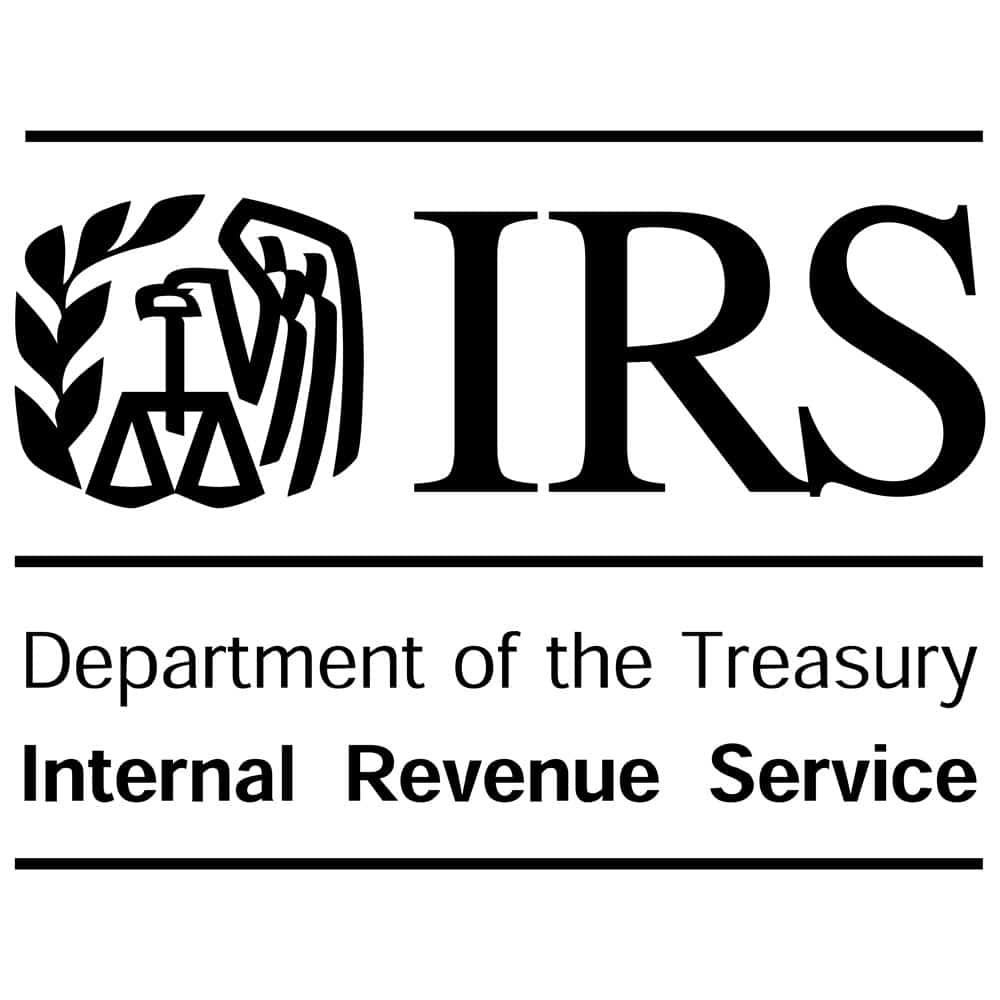An increasing number of companies are turning to Employee Stock Ownership Trust financing as a means to simultaneously raise low cost capital and provide increased employee incentives and retirement benefits while reducing the cost of qualified plan benefits. The Employee Stock Ownership Plan is a qualified plan under Section 401(a) of the Internal Revenue Code. As such it is in the same family as pension plans, profit sharing plans and stock bonus plans. Nevertheless, The Employee Stock Ownership Plan (which together with the Employee Stock Ownership Plan, is referred to as the “Trust” or “ESOP”) is qualitatively different from other types of “qualified plans,” both in its concept and in its applications.
Because of its inherent flexibility, because of its ability to facilitate and enhance corporate growth and because of its separate status under the recently enacted Pension Reform Act, the ESOP possesses an assortment of unique advantages not possessed by other qualified plans. As a consequence the ESOP is destined to become an increasingly popular form of employee benefit plan. A general working knowledge of the benefits, advantages and uses of the ESOP is a “must” for corporate loan officers, trust officers, estate planners, deferred compensation specialists, employee benefit specialists, corporate financial consultants, CPAs, CLUs and other income tax advisors.
Advantages of ESOP
Inherent Flexibility
The ESOP is at one and the same time a plan of corporate finance, an employee incentive plan, an executive compensation plan, and an employee retirement plan. Moreover, the ESOP may be used by either a public or a private company and may be used either with or without financing. In addition, the ESOP creates a market, comparable to that of a publicly traded company, for the sale of a minority or controlling interest in a closely-held company. By using an ESOP a company also avoids the funding problems inherent in certain other types of qualified plans. Because 3n ESOP can be designed to simultaneously serve all of these functions, the ESOP is inherently more flexible than other types of qualified plans.
Facilitating Corporate Growth
Today’s capital starved economy has created a host of problems for the growing company. In addition to the unprecedented need for additional capital for corporate growth and expansion, the corporation of today is also faced with increasing demands of employees for greater employee benefits, with declining employee incentives and productivity, and with a newly enacted Pension Reform Act, which substantially increases the costs of funding conventional employee benefit plans.
Properly designed, the ESOP can be the solution to all or most of these problems. Because The Employee Stock Ownership Plan is invested in company stock, for example, the company’s cash flow is increased rather than reduced. Thus the ESOP highlights the close relationship between corporate finance and the cost of providing employee benefits. Other qualified plans, for example, necessarily involve making a choice between the conflicting goals of providing for future corporate growth and of providing for employee benefits. With an ESOP on the other hand, the situation is reversed, and the corporation is enabled to simultaneously facilitate corporate growth, while also providing the employees with benefits which have a direct impact on employee incentives and which are at least equal to, and frequently greater than, the benefits that otherwise could have been provided.
Employee Incentive Plan
The ESOP also serves as a highly effective employee incentive device. By enabling employees to acquire an ownership interest in their employer, the ESOP provides employees with a direct and vested interest in the success of their company, creates an identity of interest between management and labor, permits employees to share in the capital growth of the company, builds employee loyalty and concern for corporate progress, and provides employees with a benefit the value of which can be influenced by their own efforts. A collateral benefit is that the ESOP often serves to diminish employee interest in unionization.
Executive Compensation Plan
Because trust benefits are allocated in proportion relative compensation, the ESOP favors the highly-compensated key employees more than the rank and file employees, and thus can be used to provide pre-tax executive compensation plans or to complement an existing executive compensation plan. Since the ESOP enables employees to acquire stock ownership with pre-tax funds, requires no employee contributions, avoids the necessity for employees to use accumulated savings or individually borrowed funds in order to purchase stock, and enables the corporation to deduct the full cost of the benefits, the ESOP is frequently superior as an executive compensation device to stock option plans, stock purchase plans, restricted stock purchase plans and other similar plans which reduce employees’ take home pay.
Employee Retirement Plan
Because trust benefits are normally distributed at retirement, the ESOP also serves to provide retirement benefits. In this respect the ESOP functions like a conventional qualified plan in relating retirement benefits to length of service. Thus an ESOP, like a conventional qualified plan enables the company to attract and retain highly qualified employees, to reduce employee turnover, to reward long service, and to provide for retirement security. Like a conventional qualified plan, the ESOP also permits the tax-free accumulation of income, and accumulated benefits are not subject to federal estate taxation if the participant dies prior to complete distribution.
Advantages Under the Pension Reform Act
The Pension Reform Act, with its new provisions for accelerated funding and for plan termination insurance, significantly increases the cost of adopting and maintaining pension plans. As a consequence, many employers will be discouraged from adopting a qualified pension plan, and benefits under existing plans will rise at a much slower pace than in the past. An ESOP, on the other hand, is self-funded and is exempt from the termination insurance provisions.’ Accordingly, the ESOP provides an alternative plan for the employer that would otherwise be unable to afford the cost of funding employee benefits.
In addition the Pension Reform Act requires most types of pension and profit sharing plans other than “eligible individual account plans” to dispose of all employer securities in excess of 10% of the market value of plan assets.’ Since an ESOP qualifies as an eligible individual account plan. 3 the necessity for disposing of excess employer stock holdings and the prohibition against the acquisition of additional employer securities can be avoided by converting an existing plan into an ESOP. Existing plans. however. must be converted to an eligible individual account plan within one year from January I. 1975.
An additional advantage under the Pension Reform Act is that while the Act phases out capital gains treatment for the portion of a lump-sum distribution attributable to earnings of the trust. it continues capital gains treatment for the unrealized appreciation of employer securities. Moreover the capital gains tax is not incurred until the employee· subsequently sells the stock.
Private In-House Market
Since the purpose of an ESOP is to acquire employer securities. the ESOP also serves to provide a buyer for the purchase of company stock from controlling shareholders, minority shareholders and outside investors, thus eliminating one of the needs for a company to “go public. ”
Estate Planning Tool
Sales of employer stock to the ESOP qualify for capital gains treatment regardless of whether the shareholder sells all or only a part of his stock. Accordingly, the ESOP can be used to provide liquidity for estate planning purposes to provide a buyer for the purchase of shares from an estate or to provide the same liquidity as a Section 303 stock redemption plan at half the cost.
Mechanics of the ESOP Plan
Statutory Definition
The term “Employee Stock Ownership Plan” is a newly-defined term under the Pension Reform Act. Under Section 407(a)(6) of the Act, the term is defined to mean an individual account plan “which is a stock bonus plan which is qualified or a stock bonus plan and money purchase pension plan both of which are qualified under Section 401 of the Internal Revenue Code of 1954, and which is designed to invest primarily in qualifying employer securities . . .” The term “eligible individual account plan” is defined by Section 407(d)(3)(a) of the Act to mean an “individual account plan which is (i) a profit-sharing, stock bonus, thrift or savings plan; or (ii) an employee stock ownership plan; … ” From the foregoing it is apparent that the central vehicle of an ESOP is the stock bonus plan.
A stock bonus plan is a qualified plan referred to in Section 40l(a) of the Internal Revenue Code along with pension and profit-sharing plans. Like a profit-sharing plan. the basic deduction limit for contributions to a stock bonus plan is 15% of compensation.’ and annual additions.’ including contribution carryovers.’ to a participant’s account may not exceed the lesser of $25.000 or 25% of a participant’s compensation. A stock bonus plan is defined in the Regulations as being a plan, which provides benefits “similar to those of a profit-sharing plan except that the contributions by the employer are not necessarily dependent upon profits and the benefits are distributable in stock of the employer company. ” Thus the two features that distinguish a stock bonus from a profit-sharing plan are that under a stock bonus plan company contributions need not be dependent upon profits. and benefits must be distributable in employer stock. The first feature means that the employer company may obligate itself to make contributions to a stock bonus plan irrespective of profits. It is this feature, which enables a stock bonus plan, unlike a profit-sharing plan, to engage in debt financing. The second feature means that while the investment of contributions in stock of the employer prior to the time of distribution of benefits is not specifically mandated, the trust must at a minimum acquire sufficient stock of the employer company to make the required distributions of company stock under the plan.
On the other hand, in recognition of the fact that the primary purpose of the stock bonus plan is employee incentive rather than retirement security, a stock bonus plan, unlike an ordinary profit-sharing plan, may be entirely invested in employer securities.
Acquiring and Holding Company Stock
The Exclusive Benefit Rule. Under Rev. Rul. 69-494, I.R.B. 1969-38, 9, the investment of funds of an exempt employee’s trust in stock of the employer corporation will violate the “exclusive benefit of employees” rule unless the investment meets the following four investment requisites: (1) the cost of the investment must not exceed its fair market value; (2) a fair return must be provided; (3) sufficient liquidity must be maintained to permit distributions in accordance’ with the terms of the plan; and (4) the safeguards and diversity that a prudent investor would adhere to must be provided. In the case of a stock bonus plan, the requirement of a fair return is specifically waived by Rev. Rul. 69-65, I.R.B. 1969·7,9. Similarly, since a stock bonus plan is designed to be primarily invested in employer securities and to permit distributions of employer stock, the very nature of a stock bonus plan eliminates the third and fourth requirements. Accordingly, the principal investment requisite in the case of a stock bonus plan is the requirement the stock be acquired for not more than adequate consideration. Because valuation is the principal investment requisite and because valuation frequently depends upon intangible factors, it is strongly recommended that the stock be valued by an independent appraiser. Further, the valuation method, once determined, should be consistently applied bath for purposes of contributions and for purposes of distributions.
The investment requisites of Rev. Rul. 69-494 have now been codified by Section 404(a) of the Pension Reform Act. In addition, Section 407(a) of the Act specifically prohibits ordinary pension and profit sharing plans from acquiring or holding more than 10% of the fair market value of plan assets in employer securities and employer real property, and requites such plans to dispose of at least 50% of their excess holdings by December 31,1979. Section 407(b), however, specifically exempts an eligible individual account plan, as defined in Section 407(d)(3), from this diversification requirement. Under Section 407(d)(3) an eligible individual account plan includes a stock bonus plan and employee stock ownership plan. It also includes a profit-sharing plan which is an individual account plan and which explicitly provides for the acquisition and holding of qualifying employer securities. (In effect, a profit sharing plan may qualify only if it uses individual accounts and follows accounting and allocation rules similar to those of a stock bonus plan.) Moreover, Section 407(d)(3)(B) permits a qualified plan to continue to hold excess employer securities if the plan is converted into an eligible individual account plan within one year from January 1, 1975.
Contributions of an ESOP
Because the ESOP is not restricted in acquiring employer securities or employer real property, contributions to an ESOP may be made entirely in common and/or preferred stock of the employer or in employer real estate. Contributions need not, however, be made entirely in employer property. Contributions may also be made in cash, in non-employer stock, in non-employer real property, or in any combination of the foregoing. A contribution of employer stock, however, is usually preferable to a contribution in kind of other property, since a contribution of other property results in taxable gain to the employer to the extent the fair market value of the property exceeds basis.
Contributions of employer stock are frequently combined with cash contributions. Cash contributions may be accumulated to acquire additional stock when available, to repurchase stock from terminating employees, to purchase key-man or buy-sell insurance, or to make temporary income producing investments.
Another significant feature of the Act is that the Act defines the term “employee stock ownership plan” to include a combination stock bonus plan and money purchase pension plan. This means that contributions of up to 25% of compensation may be made to an ESOP, without using contribution carryovers, since the deduction limit for a qualified combination plan is 25% of compensation. 13
Purchasing Employer Securities
In general. Sections 406 and 407 of the new Act prohibit the purchase of employer stock from a party-in-interest, which includes the employer corporation and any controlling shareholder.” In the case of an eligible individual account plan (i.e. stock bonus plan or ESOP), however, Section 408(e) specifically permits the purchase of employer securities from a party-in-interest so long as the purchase is for not more than adequate consideration.” Therefore, under an ESOP employer stock may be purchased from the company, on the open market, or from individual shareholders, including controlling shareholders. Thus an ESOP, unlike other plans, may be used to enable the employees to acquire a larger block of company stock than could otherwise be acquired if the plan were prohibited from purchasing from the company or from controlling shareholders.
In addition, from the standpoint of a controlling shareholder who sells less than his entire holdings to an ESOP, the sale qualifies as a sale and is not deemed to be a redemption by the corporation, since the trust is an independent entity. This author, for example, recently obtained a private letter ruling holding that the sale to the ESOP was a purchase by it and not a Section 302 redemption by the corporation. It is this feature of the ESOP which gives rise to its use in connection with estate planning for owners of privately held companies.
Debt Financed Acquisitions
The concept of having an employee’s trust borrow funds or otherwise obtain financing for the purpose of making investments is not new. As early as 1953 Rev. Rul. 46, CB. 1953-1,287 gave specific authority for an employee’s trust to borrow to invest in securities of the employer. This ruling was subsequently reaffirmed in 1971 in Rev. Rul. 71-311, I.R.B. 1971-29,86. This ruling has now been narrowed by provisions of the new Act, Section 406(a)( I)(A) of the Act now prohibits other types of qualified plans from engaging in any transaction which constitutes a direct or indirect “lending of money or other extension of credit between the plan and a party-in-interest.” If these provisions applied to an ESOP, an ESOP would be prohibited from purchasing employer stock from a controlling shareholder on an installment sale basis, and a bank loan could be obtained only if the trust were, able to obtain the loan without the employer company’s guarantee, Section 408(b)(3), however, specifically exempts an ESOP from this prohibition, provided that the loan is primarily for the benefit of participants and the interest rate is not in excess of a reasonable rate.”
In a growing company, an ESOP is almost always more beneficial to employees than an ordinary stock bonus plan. With a stock bonus plan, each year’s annual contribution must be used to purchase or acquire stock at its then present fair market value. An ESOP, on the other hand, by utilizing financing enables the trust to obtain ownership of a block of shares at the fair market value of the stock on the date of purchase. Hence, under an ESOP the trust is able to acquire a larger block of stock than could be purchased with a single year’s contributions. As a result, there is a larger investment that is subject to appreciation and the appreciation occurs over a longer period of time, In addition, employee incentive is greatly enhanced due to the fact that the employees have not merely an unspecified commitment from the company to make future contributions, but, in effect, have a funded trust and an identifiable interest in specifically segregated trust assets which can be “earned-out” by them over a period of years.
Distributions
Distributions under an ESOP are made in much the same number as under a profit-sharing plan, Benefits may be distributed at retirement or death, upon disability, illness, lay-off, financial hardship, severance, or attainment of a stated age, or after a fixed number of years of participation in the plan (subject to a minimum period of participation of 2 years). Like a profit-sharing plan, distributions may be made either in a lump-sum or in installments, A lump-sum distribution of employer stock, however, is especially advantageous in that the unrealized appreciation is entitled to capital gains treatment when the employee sells the stock.
In order to provide a source of stock for future participants in the plan and to provide a market for shares distributed to terminated employees, the ESOP plan frequently provides for two special options on distributed shares. Under the first option, the company and or the trustee is given a “right of first refusal” to repurchase the stock if the employee decides to sell or transfer any of his stock. Under the second option. the employee is granted a “put” to sell his shares to the company and lor the trust within one year of distribution.
Plan Consolidations
Frequently it is desirable to suspend and replace an existing profit-sharing plan with an ESOP so that future contributions may be made in company stock or may be used to acquire an available block of stock for the employees. Similarly. in certain instances it may be desirable to suspend and replace an existing fixed benefit pension plan or money purchase pension plan with a combination stock bonus plan and money purchase pension plan. Properly structured. such plan consolidations do not result in a termination of the prior plan if the successor plan qualifies as a comparable plan under Reg. 1.401-6(b) and if, under Section 208 of the Pension Act, the benefit which a participant would receive if the plan then terminated is at least equal to the benefit he would have received if the plan had terminated prior to the consolidation.
Other Aspects
Under the ESOP plan, all voting rights on company stock held by the trust are exercised by the plan committee, which is appointed by the company’s Board of Directors. Voting rights on vested shares may, however. be passed through to the employees if the company so provides in the ESOP plan. In the alternative. the company may permit one or more employee representatives to serve on the plan committee.
So long as the plan is non-contributory and employees have no right to determine the manner of distribution under the plan, shares issued under the plan do not involve a “sale” or “offer to sell” within the meaning of Section 2(3) of the 1933 Act. This conclusion has been confirmed by a recent SEC no-action letter.
In adopting an ESOP, consideration should also be given to such matters as debt-financed income, allocation formulas for the allocation of interest expense, the treatment of dividends on unallocated shares and the distribution of pledged shares.
Conclusion
The ESOP is a complex but highly flexible tool. Because the ESOP concept is new and because the accounting procedures and method of allocating stocks differ from the methods and procedures used in an ordinary stock bonus plan or profit-sharing plan, the ESOP must be very carefully designed in order to avoid IRS difficulties. (I/R Code No. 2400.00)





